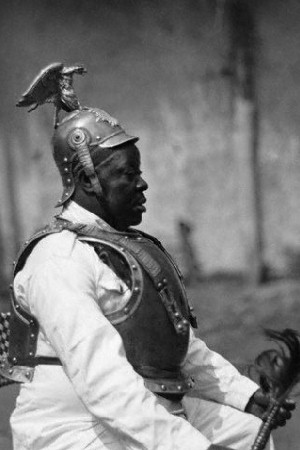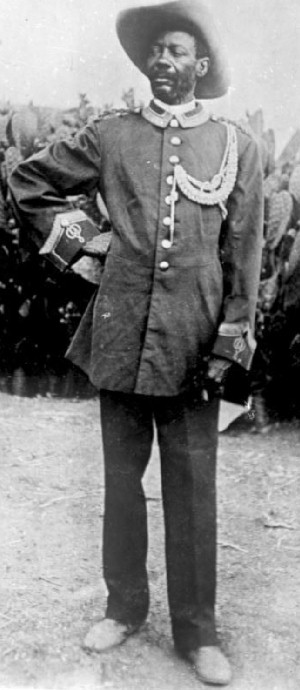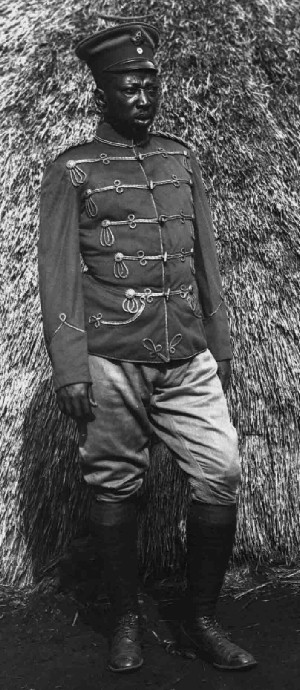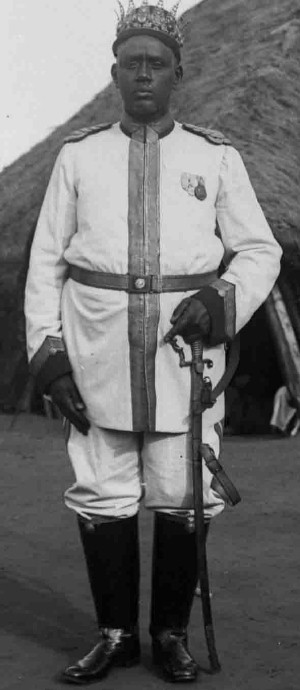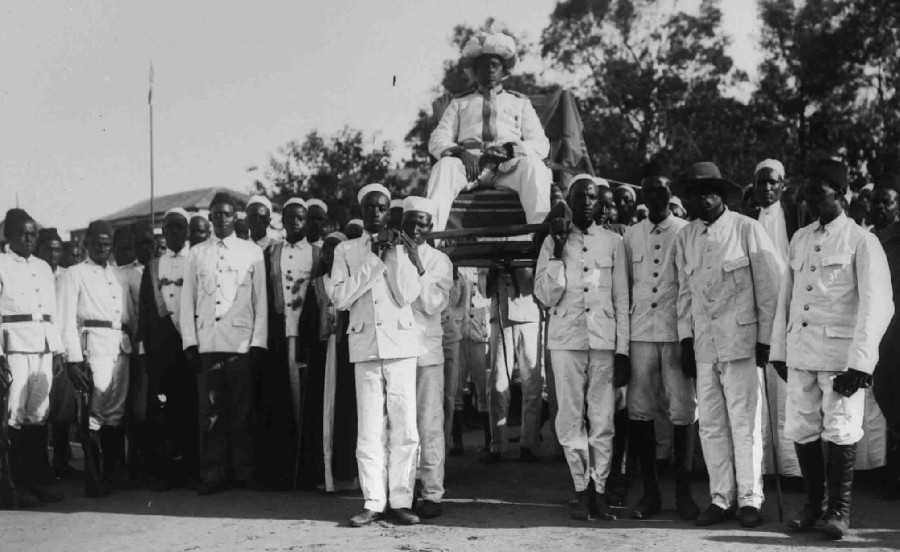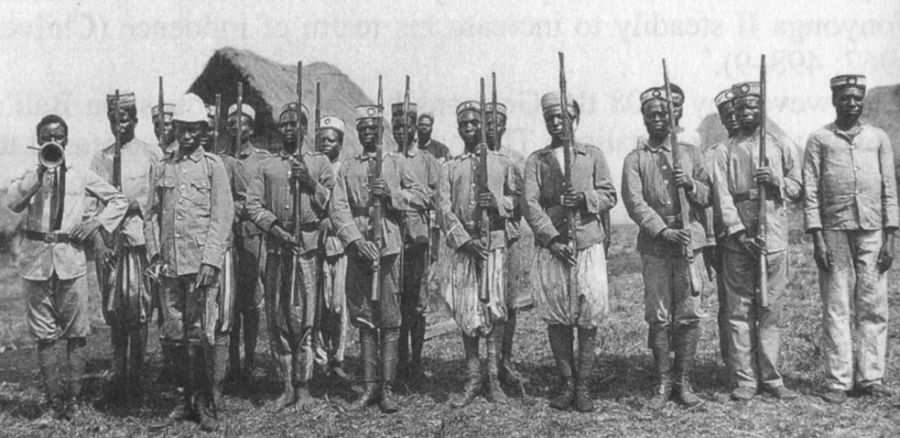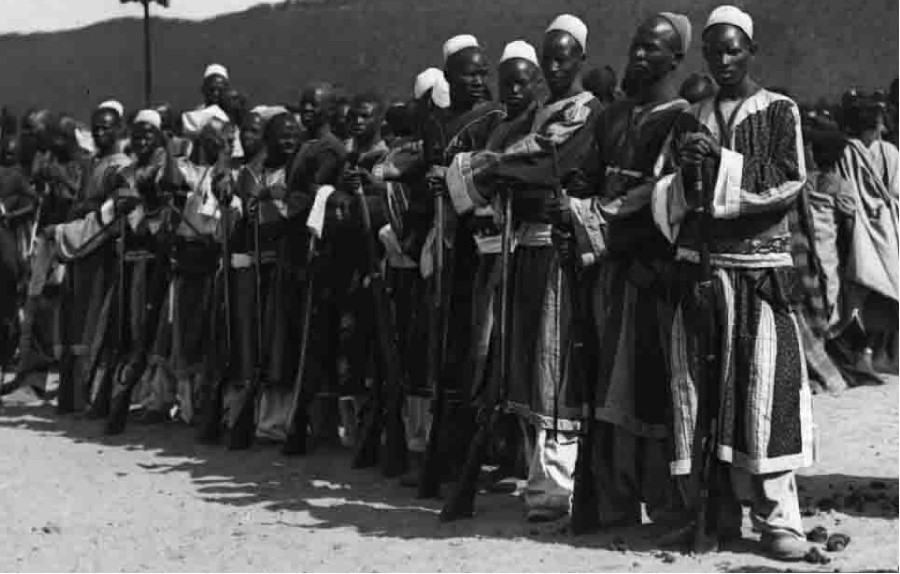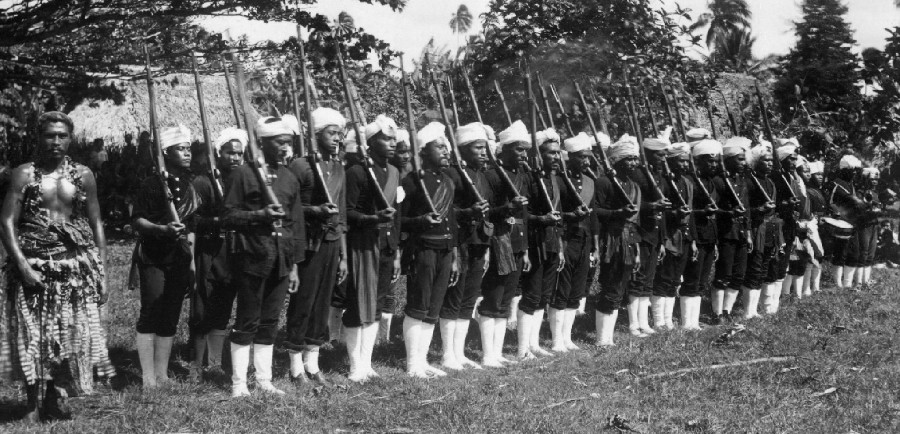|
||||||||||||
The photograph above left shows the Herero leader Samuel Maherero wearing German uniform. As mentioned above, it was not unknown for Schutztruppe officers and officials to give items of German uniform to local chiefs as a reward for their loyalty. This photograph was therefore presumably taken before Maherero rose in rebellion against the Germans in 1904. The uniform looks like that of a Prussian aide-de-camp with its laced Polish cuffs and aiguillette cords rather than that of a Schutztruppe officer. He wears a Schutztruppe Südwester hat, held up on the left side without a cockade. The Herero had a tradition of wearing German uniforms. Even when in opposition to the Germans they wore bits of captured Schutztruppe uniforms and equipment. These were proudly claimed to have been taken from the bodies of killed German soldiers. After the German surrender in 1915 the Herero amassed more German uniforms and continued to where them on parades in the years after the First World War. To this day the Herero wear copies of German style uniforms on special occasions (see Jim Naughten's Herero Article on Slate).
The photograph above centre shows an Unknown African Leader. The photograph was probably taken in East Africa, Cameroon or Togo. As mentioned above, it was not unknown for German officers and officials to give items of uniform to local chiefs as a reward for their loyalty. This man is probably one such leader. He wears a Prussian Hussar Attila tunic with the shoulder straps of a senior officer. His cap appears to be a matching Hussar officer's peaked field cap with an Imperial cockade over a Prussian cockade. Between the two cockades is a metal badge which may be an Imperial eagle. He has German riding breeches, leather gaiters and short ankle boots. The photograph above right shows Sultan Kahigi Kanassi of Bukoba in East Africa. He wears a Prussian Cuirassier type tunic with polish style cuffs that appeared to be locally made. The shoulder braided straps, medals and belt are also in imitation of German styles. His sword appears to be a genuine German officers sabre though not of a type used by Prussian Cuirassiers or the Schutztruppe. The boots might also have been purchased from European sources. His crown is purely of Bukoba origin. The Sultan was loyal to the German authorities up until and during the First World War. See also the photo below.
|
